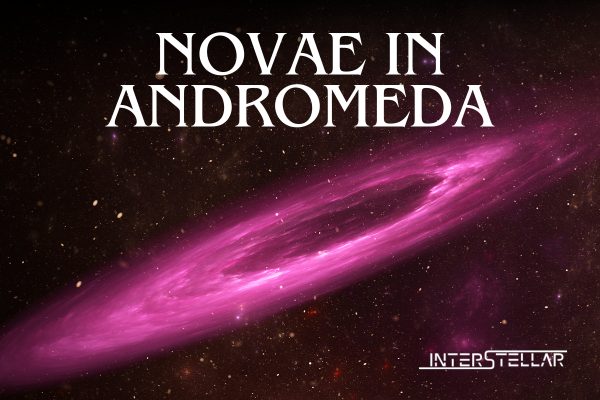Astronomers Detect Ultraviolet Emissions from Novae in Andromeda Galaxy
For the first time, astronomers detect ultraviolet emissions from novae eruptions in the neighbouring Andromeda galaxy. These rare observations were made during the outburst phase of these transient stellar phenomena, marking a significant breakthrough in the study of interacting binary star systems.
What are Novae?
A nova is a dramatic astronomical event where a dim star temporarily brightens significantly before gradually fading over weeks or months. All novae involve white dwarfs in close binary systems with another star.
In such systems, the white dwarf, a dense and earth-sized star, pulls material from its companion—often a sun-like or evolved star—onto its surface. This accumulation triggers intense thermonuclear reactions, producing an enormous burst of light. Novae play a vital role in galactic chemical enrichment and provide a laboratory for studying extreme astrophysical conditions, such as thermonuclear processes and shock mechanisms.
Breakthrough Observations with UVIT
Researchers at the Indian Institute of Astrophysics (IIA), using data from the Ultraviolet Imaging Telescope (UVIT) onboard AstroSat, detected ultraviolet emissions from 42 novae in Andromeda. Among these, four were caught mid-outburst.
“UVIT’s high spatial resolution and ability to observe simultaneously in far UV and near UV allowed us to detect accretion disks in these systems, even 2.5 million light-years away,” said Judhajeet Basu, a PhD student at IIA and lead author of the study published in The Astrophysical Journal.
The accretion disk, a hot, dense structure formed by the companion star’s material spiralling onto the white dwarf, emits ultraviolet light. Observations revealed that brighter disks consume their companion’s material more rapidly, and the accretion process in these systems appeared stable.
Insights into the Nova Cycle
Before a nova eruption, the accumulated material acts like a translucent shell, temporarily dimming the system’s brightness. This “calm before the storm” is a tell-tale sign of an impending explosion. Once the material reaches critical temperature and pressure, it undergoes a thermonuclear runaway reaction, causing a massive explosion that brightens the star system dramatically and ejects material into space.
“This is akin to a fusion bomb on an astronomical scale,” said Sudhanshu Barway, a faculty member at IIA.
Challenges and Future Prospects
Detecting novae in Andromeda’s bright central region required advanced image subtraction techniques to isolate the faint signals. Researchers confirmed their findings using two independent methods, ensuring the reliability of the results.
Basu highlighted the importance of missions like AstroSat: “These observations were only possible due to the Andromeda survey by UVIT. Future UV and X-ray missions could uncover more novae and address unresolved questions about their evolution.”
This pioneering research not only deepens our understanding of novae but also opens new doors for studying stellar evolution and interstellar chemical enrichment in our cosmic neighbourhood.
With inputs from Reuters





